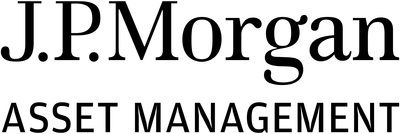J.P. Morgan Releases 2026 Long-Term Capital Market Assumptions, Highlighting Resilient 60/40 Portfolios and Opportunities to Enhance Diversification in a New Era of Economic Nationalism and AI Advancement
This year marks the flagship report's 30th anniversary, showcasing
In this 30th edition of the LTCMAs, the forecast annual return for a
"Our 30th anniversary Long-Term Capital Market Assumptions reflect on three decades of market evolution and look ahead to a future shaped by technology, shifting policy, and new asset classes," said
"The global economy is adapting to a new set of realities, with fiscal activism, technological adoption, and demographic shifts driving both challenges and opportunities," said Dr.
"For investors today, building resilience means going beyond the traditional. Investors need to think outside the box, embracing alternatives and real assets to manage risk and unlock new sources of return," said
Key findings include:
- Resilience in markets despite slower growth: Despite a dip in growth projections due to changing labor market dynamics, asset return projections remain strong.
- Economic Nationalism is a challenge, not a showstopper: Trade frictions are making headlines, but also forcing some countries to boost domestic investment – a clear silver lining to the impact of tariffs.
- Technology continues to drive this bull market: Capital investment and technology spend continue to provide momentum for the broader market. Governments are stepping up, unleashing record stimulus and incentives.
- The AI boom is at a critical juncture: Adoption is surging, and investment is massive. Investors should pivot their attention to who will be the eventual winners and losers of new technologies, making active management key.
- Equity strength, but currency matters: After two years of 20% gains followed by another 14% so far this year, US equity performance has been exceptionally strong for USD-based investors. That said, EUR-based investors have been handed a double-edged sword, as the strength of the currency offset a very respectable rate of return from US stocks.
- Diversification isn't optional, it's essential: shifting policies and higher investment mean more volatile inflation. This demands smarter portfolios that use alternatives and real assets for resilience and returns. Manager selection is key to take advantage of this current environment of disruptive change.
The report also outlines the following asset class return assumptions:
- Fixed Income
-
U.S. intermediate Treasuries are expected to return 4%, while long Treasuries are expected to return 4.9%. -
U.S. investment grade credit is forecast to return 5.2%, with spreads tightening due to a shortening of the maturity of debt issuance. -
U.S. high yield credit is expected to return 6.1%, with a fair value spread of 475bps, driven by higher credit quality. - Equities
-
U.S. large cap equities are expected to return 6.7%, holding steady from last year as the move from tech adoption to tech deployment broadens to other sectors and concerns over index concentration are expected to dissipate. TheU.S. looks likely to remain the global leader in technology origination. - Global equities are projected to return 7% (USD), with non-
U.S. markets offering more attractive cyclical starting points and benefiting from currency appreciation. - Emerging markets equities are expected to return 7.8% (USD), dipping modestly after strong performance this year.
- Alternatives
- Private Equity: The return assumption for private equity is 10.2%, reflecting a slight increase due to a more favorable exit environment and higher growth opportunities in technology and AI.
- Real Estate: U.S. core real estate is expected to return 8.2%, driven by attractive entry points and higher yields. European core real estate is forecast to return 6.9%.
- Infrastructure: Global core infrastructure is projected to return 6.5%, reflecting the essential nature of the services provided by this asset class through a shifting trade policy environment.
- Commodities: The return assumption for broad basket commodities remains at 4.6%, with the energy transition and geopolitical risks influencing the outlook. Gold is expected to return 5.5%, an increase from last year at 4.5%.
- Timberland: Global timberland is expected to return 6.3%, reflecting an increase from last year at 5.3%.
Three Decades of LTCMAs: From Spreadsheet to Global Standard
Celebrating its 30th anniversary, the LTCMAs reflect on three decades of extraordinary market evolution, including the internet revolution, the birth of the euro, the global financial crisis, quantitative easing, the pandemic, and the dawn of artificial intelligence.
What began as a modest spreadsheet for asset allocation has transformed into a globally relied upon program, built on a rigorous research process that combines quantitative and qualitative insights from over 100 industry-leading portfolio managers, research analysts, and strategists worldwide.
Today, these time-tested projections cover more than 200 assets across 20 currencies, setting the standard for strategic asset allocation and long-term investment planning in an ever-evolving financial landscape.
View the full 2026 Long-Term Capital Market Assumptions here.
About
About
Material ID: 170338d6-aacd-11f0-a9d9-31f830ff1916
![]() View original content to download multimedia:https://www.prnewswire.com/news-releases/jp-morgan-releases-2026-long-term-capital-market-assumptions-highlighting-resilient-6040-portfolios-and-opportunities-to-enhance-diversification-in-a-new-era-of-economic-nationalism-and-ai-advancement-302589249.html
View original content to download multimedia:https://www.prnewswire.com/news-releases/jp-morgan-releases-2026-long-term-capital-market-assumptions-highlighting-resilient-6040-portfolios-and-opportunities-to-enhance-diversification-in-a-new-era-of-economic-nationalism-and-ai-advancement-302589249.html
SOURCE

